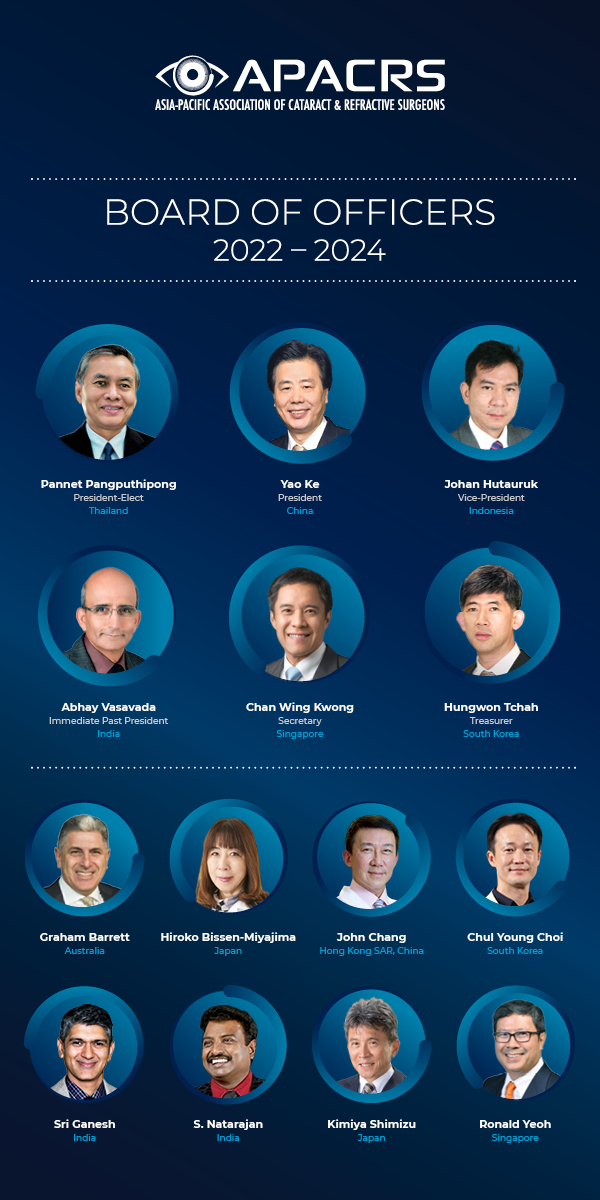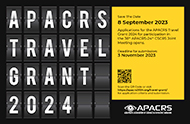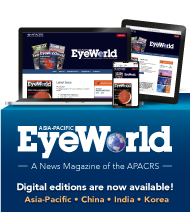Eyeworld Weekly Update |
Volume 22, Number 6 |
10 February 2017 |
- Initial testing cleared by the FDA for a new ocular melanoma therapy
- Allergan announces new program to help fight blindness
- Phase 2 data released on interim ENV515 after a single dose in patients with glaucoma
- Pediatric glaucoma center opens at Bascom Palmer Eye Institute
- Iluvien for DME now reimbursed in Italy
Initial testing cleared by the FDA for a new ocular melanoma therapy
The U.S. Food and Drug Administration (FDA) has cleared the new, investigational drug application for Aura Biosciences' light-activated AU-011 (Cambridge, Massachusetts), a therapy to treat ocular melanoma. The drug is part of a new class of therapies focused on targeting and selectively destroying cancer cells using viral nanoparticle conjugates, according to the company. "Early detection of ocular melanoma, combined with the administration of AU-011 as a potential vision-sparing therapy, could transform the treatment of patients with this devastating disease," said Brian Marr, MD, director of the Ophthalmic Oncology Service, Columbia University Medical Center, New York. Dr. Marr is a member of Aura's Clinical Advisory Board and the principal investigator for the AU-011 clinical trial, according to a company press release. The Phase 1b clinical trial is currently enrolling patients and is designed to analyze the safety, immunogenicity, and preliminary efficacy of two dose levels of AU-011 to treat small-to-medium primary ocular melanoma. Screening for eligible patients is taking place at five clinical sites around the U.S., according to Aura Biosciences.
Allergan announces new program to help fight blindness
Allergan (Dublin, Ireland) has announced a new program called See America to make vision health a priority, increase the awareness of diseases that cause preventable blindness, and help improve access to vision care. The efforts behind See America come on the heels of a fall 2016 report from the National Academies of Sciences, Engineering, and Medicine that declared eye health a public health initiative. Allergan will collaborate with the organization Prevent Blindness (Chicago) to promote better access to vision care and sponsor a series of vision-screening events around the U.S. Attendees will receive free, one-on-one professional eye exams, follow up, and education.
Phase 2 data released on interim ENV515 after a single dose in patients with glaucoma
Interim analysis of the second cohort of a Phase 2 trial for ENV515 (travoprost XR) in glaucoma patients found a clinically meaningful decrease in IOP for the 11-month evaluation period after a single dose, according to Envisia Therapeutics (Research Triangle Park, North Carolina). Compared to pre-study topical prostaglandin analogs (Xalatan, latanoprost, Pfizer, New York, and Lumigan, bimatoprost, Allergan), ENV515 also had an IOP-lowering effect, Envisia reported. There was also an IOP-lowering effect compared with in-study topical timolol maleate 0.5% daily eye drops. "These 11-month results demonstrate that ENV515 could achieve once-a-year dosing frequency, which would be very meaningful improvement over currently available daily therapies," said Thomas Walters, MD, the lead investigator for ENV515's Phase 2 trial, in a press release. The ongoing second cohort of the Phase 2 trial is a year-long safety and efficacy evaluation enrolling five glaucoma patients at sites around the U.S. ENV515 is an extended-release formulation of a marketed prostaglandin analog.
Pediatric glaucoma center opens at Bascom Palmer Eye Institute
An integrated services center to help infants and children with glaucoma has opened at Bascom Palmer Eye Institute, which is part of the University of Miami Health System in Miami. The Samuel & Ethel Balkan International Pediatric Glaucoma Center includes a clinical team that offers comprehensive glaucoma care for children, leading diagnostic technology, genetic screening, and a new Global Eye SITE program, which is dedicated to training skilled surgeons from underserved countries. The new Balkan Center is also home to the Childhood Glaucoma Research Network, an international group with more than 200 ophthalmologists from around the world who are focused on advanced pediatric glaucoma research, according to a Bascom Palmer press release.
Iluvien for DME now reimbursed in Italy
Iluvien (Alimera Sciences, Alpharetta, Georgia) is now fully reimbursable in Italy in patients who have previously had cataract surgery. Iluvien is a sustained-release intravitreal implant with the CE Mark in Europe used in to treat vision impairment from chronic diabetic macular edema. Iluvien received FDA approval in 2014.
- Data from an ocular tertiary referral center show that conjunctival tumors in children are almost always benign. Researchers, led by Carol L. Shields, MD, wanted to find if there were features that distinguished benign from malignant tumors in children. Their retrospective analysis included 806 cases of conjunctival tumors in children between 1975 and 2015. Researchers collected information on patient demographics, tumor features, and specific diagnoses. The top five diagnoses included nevus (61%), benign reactive lymphoid hyperplasia (5%), nodular conjunctivitis (4%), dermoid (4%), and primary acquired melanosis (3%). Ninety-seven percent of conjunctival tumors were benign, and 3% were malignant. For benign tumors, the mean age at detection was 11 years; for malignant tumors, the mean age at detection was 14 years. Melanoma had a greater association with older children (age 10 to 15 years) and with a larger tumor, hemorrhage, and lack of cyst. The analysis is published in JAMA Ophthalmology.
- There was an increased risk for a 1-day postoperative IOP increase after cataract surgery in patients on tamsulosin (Flomax, Boehringer Ingelheim Pharmaceuticals, Gilham am Rhein, Germany). A retrospective cohort study analyzed 584 men (864 eyes) who had cataract surgery and included both patients taking tamsulosin as well as those who did not. The primary outcome was a 1-day postoperative IOP increase of greater than 10 mm Hg compared with baseline or a 30 mm Hg or higher increase at 1 day postoperatively. "An IOP increase greater than 10 mm Hg or IOP 30 mm Hg or higher after cataract surgery occurred in 12.4% and 9.3%, respectively, of eyes in the tamsulosin group versus 4.4% and 2.1%, respectively in the control group (all P=.001)," wrote the researchers, led by Levi N. Bonnell, MPH. The results point to the importance of identifying patients on tamsulosin before surgery to better manage potential IOP spikes, the authors concluded. The study is published in the Journal of Cataract & Refractive Surgery.
- Surgical outcomes for two operation methods used with late in-the-bag IOL dislocation both had satisfactory results and not significantly different outcomes for best corrected visual acuity (BCVA) at 6 months, according to researchers, led by Olav Kristianslund, MD. The prospective, randomized, parallel-group trial randomly assigned 104 patients (104 eyes) to IOL repositioning by scleral suturing or to IOL exchange with retropupillary fixation of an iris-claw IOL. All surgeries were performed by the same surgeon. A BCVA of 20/40 or better was achieved by 61% of patients in the repositioning group and 62% in the exchange group. Both operation methods appeared safe. In the repositioning group, postoperative complications included an IOP increase (n=12), cystoid macular edema (CME: n=3), and nonarteritic anterior ischemic optic neuropathy (n=1). In the IOL exchange group, the complications were IOP increase (n=9), pupillary block (n=1), choroidal effusion (n=2), and CME (n=4). Surgeons should consider some of the observed differences in complications when selecting a surgical method, the researchers concluded. The study is published in Ophthalmology.
- In a pilot study, eyes randomized for phacoemulsification with IOL implantation alone (12 patients) or phaco with IOL plus goniosynechialysis (14 patients) both had similar outcomes at 6 months. The prospective study included patients on glaucoma medication who had 90 degrees or more peripheral anterior synechiae (PAS) and significant lens opacity. The study compared electronic Shiøtz tonographic aqueous outflow facility after phaco. Eyes having goniosynechialysis combined with standard phaco had a significantly increased tonographic aqueous outflow and reduced glaucoma medication dependency and PAS postoperatively. The research, from Ian A. Rodrigues, FRCOphth, and coinvestigators, is published in the British Journal of Ophthalmology.
 Licensed Publications |
Licensed through ASCRS American Society of Cataract and Refractive Surgery, 4000 Legato Road, Suite 700, Fairfax, VA 22033-4003, USA.
All rights reserved. The ideas and opinions expressed in EyeWorld Asia-Pacific Weekly News do not necessarily reflect those of the ASCRS�ASOA or APACRS. Mention of products or services does not constitute an endorsement by the ASCRS�ASOA or APACRS. Copyright 2008, EyeWorld News Service, a division of ASCRS Media. |




 EyeSustain Update
EyeSustain Update 2024 APACRS TRAVEL GRANT
2024 APACRS TRAVEL GRANT Digital EyeWorld
Digital EyeWorld VOL. 39 (2023), ISSUE 3
VOL. 39 (2023), ISSUE 3  Membership Information
Membership Information APACRS Principles of Preferred Practice
APACRS Principles of Preferred Practice